 |
| Deputy Prime Minister Tran Hong Ha chairs a meeting on responding to storm No. 11 (storm Matmo) - Photo: VGP/Minh Khoi |
The meeting was attended by ministries, branches and members of the Steering Committee, connecting online with the People's Committees of provinces and cities expected to be affected by storm No. 11.
The phenomenon of "double disaster"
The Deputy Prime Minister emphasized that the recent natural disaster situation has been very complicated. Storm No. 9 has not been overcome yet, then comes Storm No. 10, and now we are preparing to welcome Storm No. 11. This can be considered a "double disaster" phenomenon when the consequences of the previous storms have not been overcome, but the next storm has already arrived. "Lessons from storms No. 9 and No. 10 show that storms are becoming more and more unusual, with their speed of movement and intensity increasing rapidly, causing great difficulties for response work," said the Deputy Prime Minister.
The impact of storm No. 11 is forecasted to be from Quang Ninh to Ha Tinh, with over 11 provinces and cities at risk of being affected. However, the Deputy Prime Minister noted that the danger is not only in the eye of the storm, but also in areas outside the eye of the storm, where heavy rains, tornadoes, landslides, flash floods, and landslides are likely to occur. Many recent damages such as in Ninh Binh, Lao Cai, Tuyen Quang, Yen Bai ... after storm No. 10 have proven this.
Therefore, the Ministry of Agriculture and Environment must report in detail on storm, rain, hydrology, and dam forecasts, thereby issuing specific warnings and recommendations for each locality. "Meteorological and hydrological forecasts are extremely important. But more important is how to respond. We must learn lessons from the recent damage to properly perceive the level of danger, have a timely response scenario, and not be passive or confused."
Two scenarios for storm No. 11's landing
According to Mr. Mai Van Khiem, Director of the National Center for Hydro-Meteorological Forecasting, it is forecast that on the evening of October 3, the storm will enter the eastern sea area of the central East Sea, becoming the 11th storm in 2025.
The storm moved quickly, continued to strengthen and reached its strongest intensity of level 12, gusting to level 14-15 in the eastern area of Leizhou peninsula (China).
Mr. Khiem presented two scenarios for the landing of storm No. 11. Firstly (with a probability of about 70-75%), the storm will move more to the North, moving more over mainland China (similar to the path of storm No. 9). Therefore, when reaching the northern area of Quang Ninh province, it will weaken by 2-4 levels compared to the time when the storm is at its strongest; strong winds in the Gulf of Tonkin will be at level 9-10, in the mainland of Quang Ninh-Hai Phong, strong winds will be at level 8-9 and cause heavy rain in the North (focusing on the midlands and mountainous areas).
The second scenario is more extreme (with a probability of about 25-30%). The storm moves southward mainly over the sea, so it weakens less than scenario 1. Therefore, the storm's intensity when entering the Quang Ninh area will be stronger than scenario 1, possibly causing strong winds of level 9-10 (gusts of level 12-14), the impact will expand to the south (Quang Ninh - Ninh Binh); the rain will also be heavier, the strong wind area will also be deeper inland. It is expected that around the evening of October 5, the storm will enter the Gulf of Tonkin. By the early morning of October 6, the storm will make landfall in Quang Ninh province.
From the night of October 5 to the end of the night of October 7, in the Northern region, Thanh Hoa and Nghe An, there will be heavy to very heavy rain with common rainfall of 100-200 mm, locally over 300 mm; in the mountainous and midland areas of the North, common rainfall will be from 150-250 mm, locally over 400 mm. Warning of the risk of heavy rain (over 200 mm in 3 hours).
Deputy Minister of Agriculture and Environment Nguyen Hoang Hiep said that heavy rain is forecast to start from the evening of October 6, with the heaviest rain at night and early morning of October 7. The rain will be concentrated in the provinces of Quang Ninh, Lang Son, Cao Bang, Thai Nguyen, and Ha Giang. Bac Ninh and Hanoi will also be in the heavy rain area. By October 7, the rain will spread to northern Thanh Hoa and northern Nghe An.
Storm No. 11 is also likely to cause a new flood from October 6 to October 9, with flood peaks from alert level 2 to alert level 3, especially dangerous in the Northeast region: Quang Ninh, Lang Son, Cao Bang, Ha Giang, Thai Nguyen, Bac Kan.
Heavy rains forecast from upstream China could increase pressure on the entire Lo River basin. Reservoirs, especially small hydropower plants in Ha Giang, must carefully calculate their operating plans to absolutely avoid unsafe incidents.
Localities need to concentrate human and material resources to urgently overcome the consequences of storm No. 10, because just a little more rain can cause serious subsidence, landslides, flash floods, etc.
Deputy Minister Nguyen Hoang Hiep also requested localities to ensure absolute safety of construction works, especially highways; urgently call on boats and rafts to take shelter in safe places, and absolutely not let fishermen be subjective.
In addition to strong winds and heavy rains, the most worrying issues at present are the dike system and the risk of urban flooding. According to assessments, sea dikes in Ninh Binh, Nghe An, and Ha Tinh have basically stabilized after being reinforced, but the river dike system in Hai Phong, Quang Ninh, and Hung Yen still has many weaknesses. Big waves and sea level rise of 3-4 m can seriously threaten river mouths. Provinces need to closely follow the scenario, immediately deploy dike protection plans, ensure the safety of the dike system, and prevent flooding in urban areas.
Evacuation work was carried out earlier.
Speaking at the meeting, Chairman of Lao Cai Provincial People's Committee Tran Huy Tuan said that storm No. 10 had caused particularly serious consequences in the province. The whole province had 7 dead, 3 missing, 10 injured; nearly 12,000 houses were flooded, more than 4,000 hectares of agricultural land and many livestock and poultry were damaged. Infrastructure was severely affected: 7 national highways, 14 provincial roads and many inter-village roads were eroded and cut off; 15 medical facilities and 65 schools were affected.
Up to now, the province has basically overcome the situation, with only 4 villages still isolated. National and provincial highways have been reopened. Lao Cai has identified the top priority task as restoring traffic, both to ensure the flow of goods and relief, and to proactively respond to storm No. 11. The province is urgently reinforcing landslide sites and installing steel cages to ensure safe travel.
The evacuation was carried out earlier because the land was saturated with water and there was a high risk of landslides. The province prepared food, medicine, and necessities on the spot, especially in areas at risk of isolation, following the "4 on-site" principle; stocked up on gasoline, generators, and moved machinery, equipment, and vehicles to key points for timely rescue.
Currently, Military Region 2 and the Provincial Police are maintaining thousands of officers and soldiers on duty at key locations to work with localities to overcome consequences and be ready to respond when necessary.
Meanwhile, the leaders of Tuyen Quang province pointed out three main reasons for the widespread flooding in the locality: Very heavy rainfall; large flood discharge; and the drainage system is congested downstream. Currently, Tuyen Quang has deployed forces at key points to continue to hold out, while supplementing necessities and equipment to be ready to respond to floods caused by storm No. 11; reviewing scenarios, proactively evacuating people in areas at risk of insecurity; preparing vehicles, boats, canoes, and reserve food; gathering machinery and equipment at key points to promptly handle incidents.
A representative of the Ministry of Industry and Trade said that in the process of responding to storms No. 9 and 10, the Ministry issued many dispatches and sent inspection teams to the projects, especially Tuyen Quang and Thac Ba hydropower plants. Due to continuous flood discharge for a long time, many landslides appeared in the downstream area, threatening some households along the river. The Ministry requested the investor to coordinate with local authorities to warn and evacuate people from dangerous areas.
The Deputy Prime Minister emphasized that the current major concern is not only storms at sea but also floods on rivers and hydroelectric reservoirs. The Ministry of Industry and Trade and the Ministry of Agriculture and Environment must review and carefully evaluate the operational situation, because "flood discharge is a mandatory task, but how and when to discharge will determine the effectiveness of the response. If the discharge is not calculated, the flood can resonate with heavy rain, increasing flooding downstream."
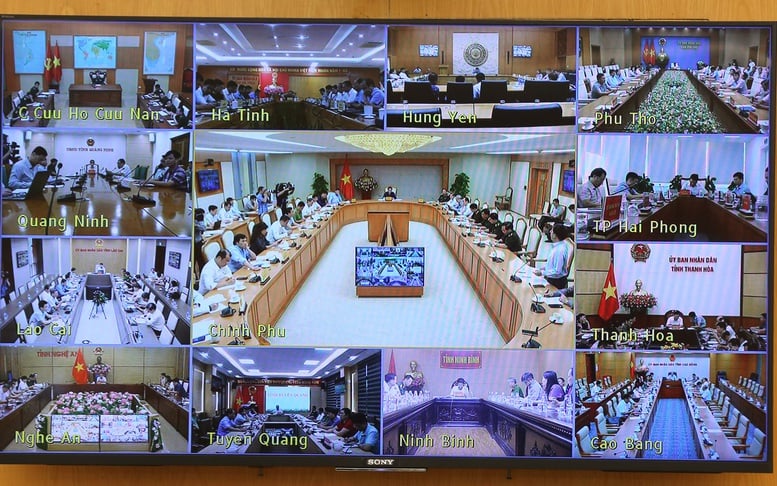 |
| Local leaders participate in the meeting online - Photo: VGP/Minh Khoi |
In addition to reservoir safety, the Deputy Prime Minister also directed the Ministry of Industry and Trade to urgently fix the power system damaged by the storm, especially the medium voltage grid; at the same time, re-evaluate the design standards of essential infrastructure such as electricity, telecommunications, construction works, and dykes. "In reality, the current storm has far exceeded the wind and wave levels in the design. If the standards are not adjusted, we will always be passive."
The Army and Police have maintained their forces on standby since storm No. 9 until now.
Reporting on the deployment of forces on standby to support localities, Senior Lieutenant General Huynh Chien Thang, Deputy Chief of the General Staff of the Vietnam People's Army, said that from September 2025 until now, many military units have remained at their bases, not returning to their units to directly participate in rescue and overcoming the consequences of storms No. 9 and No. 10, and at the same time preparing to deal with storm No. 11.
Localities need to proactively coordinate with military forces stationed in the area, through the Provincial Military Command, to review areas that are often isolated, arrange human resources, food, and communications in advance, "coordinate closely, and assign tasks reasonably" between the army and militia and self-defense forces to maximize the effectiveness of available forces.
For coastal areas, Senior Lieutenant General Huynh Chien Thang requested localities to resolutely not let fishermen and boats go to sea after the ban was issued, "not to be subjective and go to sea too soon right after the storm makes landfall, leading to unfortunate damage.
Agreeing with this opinion, Major General Nguyen Hong Nguyen, Deputy Chief of the Office of the Ministry of Public Security, emphasized that localities must seriously learn from the cases of shipwrecks and missing fishermen in storm No. 10, and closely inspect and review, not allowing fishermen to stay on board.
The representative of the Ministry of Public Security also noted that storm No. 11 affected the same area that had just suffered severe consequences from storm No. 10. The Ministry of Public Security has decided to retain 100% of the troops that participated in responding to storm No. 10; proposed to develop a standard procedure for responding to strong storm circulations of level 14-15, clearly defining the responsibilities and specific actions of each sector, especially in handling urban flooding, to avoid confusion like in the past.
The Deputy Prime Minister highly appreciated the "four on-site" model of Military Region 4, thanks to the proactive dispersion of forces, food, and necessities, which can respond on the spot. Meanwhile, mountainous areas are often isolated when natural disasters occur, inaccessible by road, so it is necessary to reserve dry food, milk, water, and equipment in advance at units. The Ministry of National Defense needs to direct Military Region 2 and related units to be ready, allocate forces reasonably, and provide timely support to mountainous localities.
Realizing the special complex nature, do not be subjective.
Concluding the meeting, Deputy Prime Minister Tran Hong Ha emphasized: Storm No. 11 is extremely dangerous, a "natural disaster on top of natural disaster". Localities need to clearly understand the particularly complex nature of the situation to take timely measures and not be subjective.
Faced with the situation of three consecutive storms making landfall, accompanied by many types of natural disasters (storms, floods, inundation, flash floods, landslides, even dike breaks and cross-border flood discharge impacts from upstream China...), forecasting agencies need to continue updating, combining international forecasts with practical experience, preparing for the situation of "storm on storm, multiple natural disasters".
The Deputy Prime Minister appreciated the localities for notifying 100% of the vessels, but requested direct inspection and supervision to avoid the situation of "no inspection, no enforcement is not acceptable". The localities of Quang Ninh, Hai Phong, and Ninh Binh need to be especially vigilant of the risk of thunderstorms and tornadoes before the storm.
Because after storm No. 10, many river and sea dikes are still weak, the Deputy Prime Minister requested that within two days before the storm makes landfall, localities must mobilize forces to handle the situation immediately, "when the storm hits, it will no longer be possible."
The Deputy Prime Minister assessed that the Northern midland mountainous region is an especially dangerous area, with many places having not yet fully recovered from the damage, search and rescue operations still in progress, and now facing heavy rain. Therefore, the meteorological and hydrological agency needs to accurately delineate the heavy rain area, calculating the amount of water flowing from upstream. Localities must delineate landslide risk areas, evacuate people from vulnerable areas, use solid schools as shelters, and ensure food and long-term medical care.
Local authorities, police and military must resolutely enforce evacuation in case people do not comply, and at the same time ensure the safety of property and boats so that people can feel secure.
Regarding the safety of dams, hydroelectric power plants, and irrigation, the Deputy Prime Minister assigned the Ministry of Agriculture and Environment to be responsible for regulating, controlling, and deciding the timing of flood discharge and flood cutting, to prevent "floods overlapping floods and serious urban flooding"; and proposed to increase information exchange with China on hydrology of rivers across the border, especially flood discharge data.
The Ministry of National Defense has been provided with boats and canoes to assist in rescue operations in mountainous provinces isolated and cut off by floods. The forces are implementing the "4 on-site" principle, bringing food, drinking water, medical supplies, fuel, and communication equipment to maintain connectivity.
The Ministry of Industry and Trade and the Ministry of Construction are reviewing all electricity infrastructure, transportation, and construction works to adapt to increasingly strong storms. Particularly for Hanoi, there needs to be a scenario for flood prevention, not filling up lakes and rivers; and planning additional temporary water storage spaces, including under stadiums and schools.
Not only responding to storms, but also to accompanying natural disasters
Regarding the development of response procedures when storms, floods, and natural disasters occur on top of natural disasters, the Deputy Prime Minister said that it is necessary to issue standard procedures and regulations to respond and change management methods, "it is impossible to hold general meetings when the storm has arrived".
The Ministry of Agriculture and Environment has issued a framework for classifying natural disaster levels, and must approach responses based on that level to mobilize and arrange forces. There are cases that only need to be handled by ministries, branches, and localities, the National Civil Defense Steering Committee only supervises, but there are also situations where the Central force must directly intervene.
Therefore, according to the Deputy Prime Minister, it is necessary to promulgate standards, standard procedures, and legal documents to ensure implementation. In particular, all stages from military forces, on-site defense, forecasting work, plans before, during, and after storms, and response to each specific type of natural disaster must have plans and scenarios.
"Scenarios, plans, processes, and regulations are mandatory requirements that must be formalized and made into legal documents for implementation. Each locality and each sector must have a specific plan; each area must have a person with full command. There must be clear assignment and division of tasks. Who will participate, where to fight, and how to fight must be determined from the beginning," said the Deputy Prime Minister.
Immediately after this meeting, any locality that can must develop a specific scenario and plan. While there are no regulations yet, it is necessary to temporarily assign someone in charge of each area. "Each place must have one person assigned full authority to command."
The Ministry of Agriculture and Environment needs to immediately issue a document directing all localities in the area directly affected by the storm and also in areas outside the impact, regarding the following issues: Dikes, floodwaters, and risk of dike breaches.
The Deputy Prime Minister also noted that when fighting storms, not only storms, but also before, during and after storms with accompanying natural disasters, following or arising after storms. For example, flooding in Hanoi or other large cities must have a 4-scenario in place, regulating traffic, ensuring electricity infrastructure, how schools and offices must prepare for operations... to reduce damage.
Forecasting agencies must also have specific warnings about flooding for urban areas, clearly indicating the need to apply plans and scenarios to prevent flooding and damage caused by floods.
The Deputy Prime Minister stated: "We must take the worst-case scenario to forecast. The higher the forecast, the higher the vigilance, the more comprehensive and synchronous the preparation, the less damage."
Source: https://huengaynay.vn/chinh-tri-xa-hoi/theo-dong-thoi-su/du-bao-cang-chinh-xac-canh-giac-cang-cao-chuan-bi-day-du-thi-thiet-hai-se-giam-158455.html




![[Infographic] Notable numbers after 3 months of "reorganizing the country"](https://vphoto.vietnam.vn/thumb/1200x675/vietnam/resource/IMAGE/2025/10/4/ce8bb72c722348e09e942d04f0dd9729)
![[Photo] General Secretary To Lam attends the 8th Congress of the Central Public Security Party Committee](https://vphoto.vietnam.vn/thumb/1200x675/vietnam/resource/IMAGE/2025/10/4/79fadf490f674dc483794f2d955f6045)


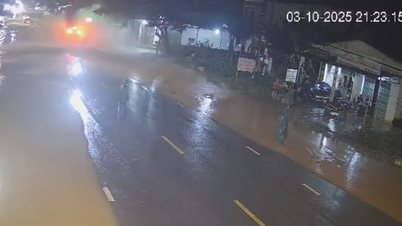

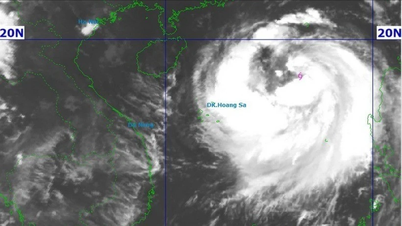



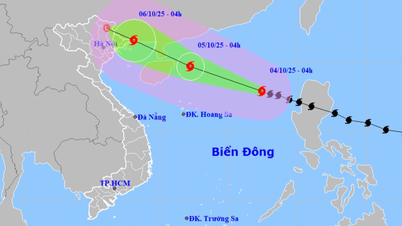




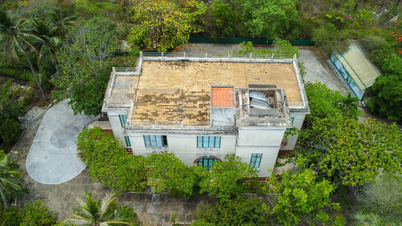
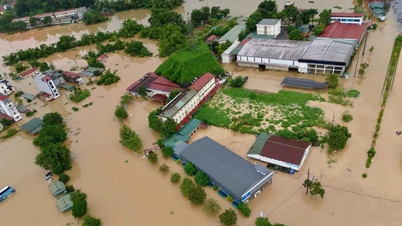















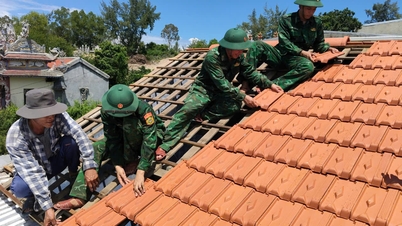
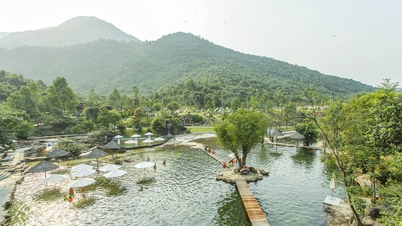
![[Photo] Prime Minister Pham Minh Chinh chairs meeting to deploy overcoming consequences of storm No. 10](https://vphoto.vietnam.vn/thumb/1200x675/vietnam/resource/IMAGE/2025/10/3/544f420dcc844463898fcbef46247d16)
![[Photo] Students of Binh Minh Primary School enjoy the full moon festival, receiving the joys of childhood](https://vphoto.vietnam.vn/thumb/1200x675/vietnam/resource/IMAGE/2025/10/3/8cf8abef22fe4471be400a818912cb85)













































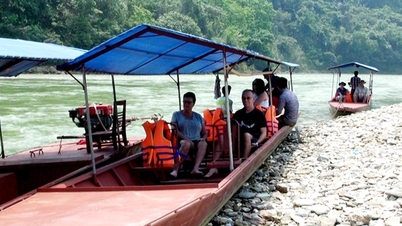





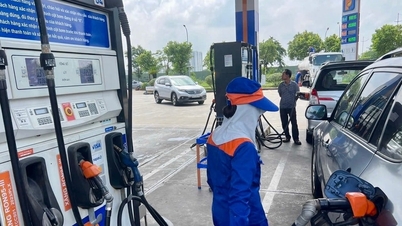
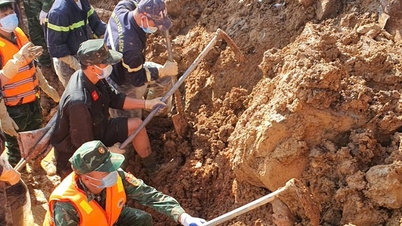

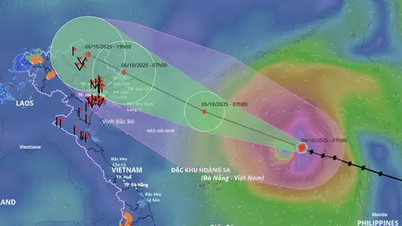















Comment (0)